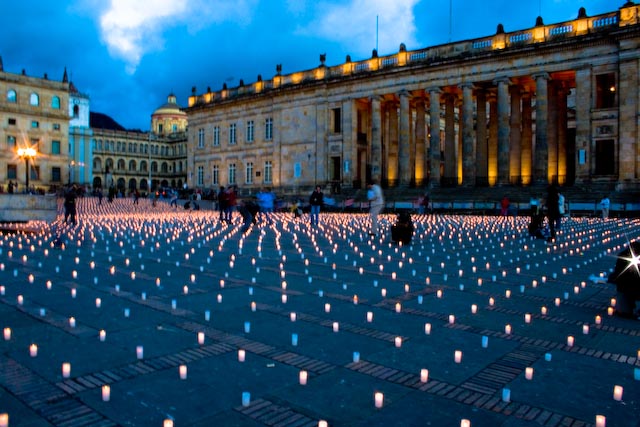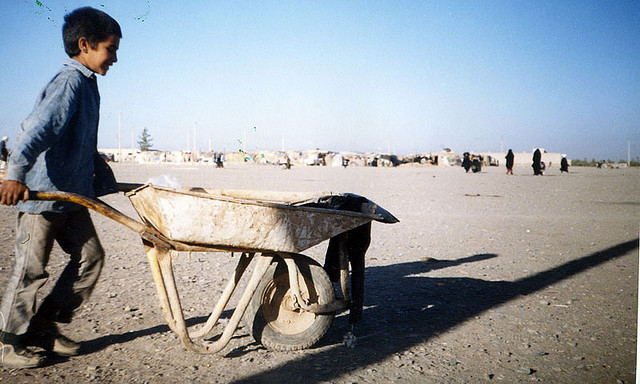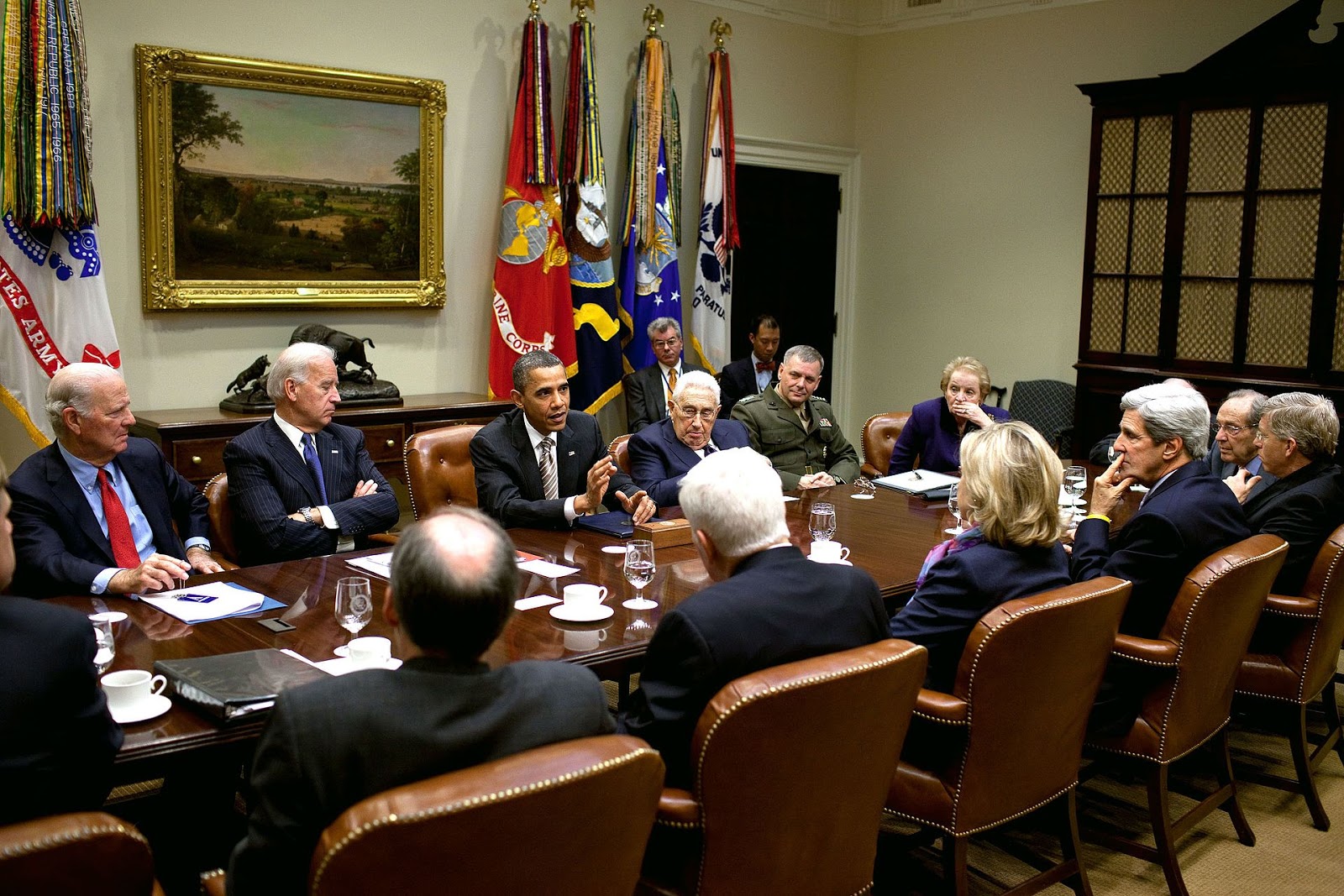The Fuerzas Armadas Revolucionarias de Colombia, better known as the FARC, began as a resistance movement among impoverished farmers in rural Colombia during the 1920’s and 1930’s. The movement started peacefully as a way to protest a lack of government intervention in peasant hardships, but when the government failed to intervene. The FARC became more politically volatile, following a Marxist-Leninist way of thinking, as well as more physically aggressive. The organization also began to make its money from the sale of illicit drugs.[1] Over the past half century, the FARC has victimized and displaced hundreds of thousands of Colombian citizens. In fact, Colombia has one of the highest rates of internally displaced persons, with 5.7 million refugees recorded within the countries’ borders.[2] Roughly 220,000 people have been killed in the armed conflict with 80% of these deaths being civilians.[3] While the number of victims of kidnapping, violence, and displacement are considerably lower than they were in the early 2000s, Colombia Reports, an English news site based in Medellin, indicates that there were still over 100,000 victims of these types of crimes in 2014.[4] This civilian directed violence carried out by the FARC has made the prospect of peace precarious at best.
The FARC has been participating in peace talks with the Colombian government since late 2012. The group, seen as a terrorist organization by the European Union and the United States, has been fighting as a rebel army in the rural countryside of Colombia for the past 50 years.[5] The recently re-elected president Juan Manuel Santos has been working tirelessly throughout his time in office to come to an agreement with the FARC in order to secure safety and peace for the Colombian people. Though widespread violence by the rebel army has slowed tremendously in recent years, kidnappings and attacks on rural areas have continued to splatter headlines in Colombian news sources. Since President Santos’ reelection in 2014, peace talks have ramped up significantly. There are six main points that the current negotiations are focused on: rural reform, political participation, illicit drugs, victims, end of conflict, and implementation. The first three issues have been agreed upon while the latter three are still being discussed.[6] With half of the issues still being debated, peace is a very real, albeit problematic, possibility. Each side claims a desire for peace, but in reality neither seems willing to trust the other enough to finish the peace talks and implement changes. Without the willingness to trust one another, it seems unlikely that peace talks will ever amount to more than just that—talk. President Santos seems afraid to make any particularly aggressive moves, either toward peace or away from it, for fear of upsetting the current precarious balance of power. Because the Santos government continues to straddle the line between aggression and compromise, and the FARC’s creation of a wealthy and extensive system of power, it is improbable that the two parties will strike a peace accord in the near future. In order to achieve lasting stability, the Santos government must act decisively to either diplomatically reach a peace agreement with the FARC or destroy their existence altogether through brute military force.
In December 2014, the FARC presented a ceasefire offer to the Colombian government. The FARC claims that the ceasefire is an attempt to help expedite compromise during the peace talks. The government is wary to trust the offer, stating, “the guerilla’s conditions are unacceptable until a peace deal is reached.”[7] Further, the Colombian government believes that the FARC would only use a ceasefire as time to remilitarize troops. After such an extensive period of violence, the Colombian government seems justified in not wanting to leave itself vulnerable by trusting the rebels not to take advantage of such de-escalation. However, it is difficult, if not impossible, to agree to peace terms with any entity that continues to carry out violent attacks despite a clear effort to create lasting peace. The same thing can be said for the FARC, who continues to assert that if the Colombian government does not agree to call off their troops and abide by the ceasefire, the FARC will end negotiations altogether.[8]
This stalemate situation, in which neither side fully believes the other to be trustworthy, has been repeated many times throughout history. In this particular case, the conflict happens to be within one country, and not across state boundaries. The government cannot trust the FARC and the FARC cannot trust the government. The inability to agree upon terms for a basic ceasefire does not bode well for more permanent peace resolutions. While some terms have been agreed upon, it seems unlikely, given the violent history of Colombia and the level of mistrust between the FARC and the government, that all terms will be both compromised on and upheld without violence. However, it also seems implausible that Colombia will remain in a continuous state of war.
Since their inception, the FARC has become a powerful institution in Colombia. They hold a great deal of power and wealth. It is estimated that the FARC receives $600 million yearly from the trafficking of illicit drugs. They supply 50% of the world’s cocaine and 60% of U.S. cocaine.[9]The FARC also levies unofficial taxes against rural Colombian villagers and extorts money via kidnapping ransoms. In many of the rural areas of Colombia, the FARC has created full systems of rule, which provide a great deal of power and stability as an organization.[10] The FARC tendency towards violence and their comfort in ruling large portions of rural Colombia are not likely to end just because President Santos has decided to pursue peace talks. Furthermore, it is possible that the FARC has only agreed to peace talks out of fear for their own continued relevance. In 2010, Victor Julio Suarez Rojas, the FARC’s senior military commander, was killed during a Colombian military raid. It created quite a setback for the FARC that they never recovered from.[11] The Colombian people are wary that the FARC may just be using peace talks as a way to recover from their loss. This strategy does seem to be more plausible than the FARC’s sudden willingness to give up any of its violent tactics which, for the past half a century, have secured its place in Colombian society.
One of the contested issues in the peace negotiations concerns possible amnesty for FARC leaders. While the Colombian government may be willing to make this kind of concession to the FARC, the Colombian people may not be so ready to forget the grievances held against the FARC from the past half a century. Though President Santos’ desperation for results may lead him to offer a great deal of amnesty to the FARC rebels, many Colombians feel that a group which has carried out acts of terror as severe and damaging as those the FARC has carried out, deserves no such reprieve. The Colombian people want to end the conflict, but may not be willing to offer full-fledged forgiveness that essentially absolves the rebels of a half century of atrocity.
The fact that the Colombian people have faced such high levels of displacement and victimization suggests that they are in no position to rise up against both the government and the FARC to assert their will. However, underestimating the will of the Colombian people in the face of adversity is folly. In early December, thousands of Colombians took part in marches protesting possible amnesty for FARC members.[12] Although the amnesty agreement may be the only way to appease the FARC, it is clearly not something the Colombian people will agree to.
These presence of these marches calls into question the government’s will to end the conflict. President Santos is working tirelessly to come to agreements with the rebel group, but many Colombians believe that negotiating with the FARC will not achieve anything. Former President Alvaro Uribe was quoted as saying, “We call on the army to support us by fighting and defeating the guerrillas, if the government wants it or not.”[13] Defeating the FARC is an ambitious and potentially impossible goal, but dancing around negotiations while violence is still occurring, while people are being displaced, and while the FARC is still ruling with impunity seems to be more of a front for peace than anything else. Surely, after 50 years of violence, a more aggressive campaign could be undertaken to assert power and once more regain full sovereignty over Colombia.
It is a dubious hope that the Santos’ administration will ever take such an aggressive stance as the one that former President Uribe advocates, and perhaps that is ultimately for the best. After all, the FARC is powerful, wealthy, and has been in existence for decades. The FARC has built up a massive presence, albeit a much hated one, that will stain Colombian memories for years to come. Organizations — and the ideas they stand for — which wield that much power are not easily erased, and it is possible that an aggressive offense would do nothing more than make any form of peace impossible and fuel the FARC’s anger towards the government.
The discontent felt by the Colombian people towards their government’s handling of peace negotiations is just the most recent manifestation of the decades of discontent that initially bred the FARC. According to Joel Gillin in Colombia Reports, many of Colombia’s economic and political struggles have at their center, “the problem of a weak state.”[14] Without strengthening government institutions throughout the nation, it is arguably impossible that either peace or aggressive military action will fix the larger problem at hand: Colombia’s weakness as a state. Without the proper institutions in place, parallel powers are likely to establish themselves out of necessity. However, part of the peace negotiations include the development of infrastructure, especially with regards to agriculture. If Santos were to fully commit to peace talks, it might not only be the end of armed violence, it might also be the beginning of a new, strengthened Colombian state.
The Colombian government needs to commit resolutely in one way or another, whether through a complete commitment to peace or a complete commitment to destroying the rebel presence. Dancing back and forth between peace negotiations and military actions against the FARC is ineffective, and has put Colombia on a track going nowhere. The Santos government has two distinct options: It can either choose to trust the FARC, accept the peace deal offered, and give the FARC more political power than the people of Colombia would like, or it can choose to attack the FARC with full military conviction. Either way a decision must be made if there is to be any hope for stability. Otherwise, the peace negotiation gridlock and the air of uncertainty that has dominated Colombian news for the better part of the past two years will only continue. Moreover, this lukewarm approach to the issue will only retain a relative level of calm for so long. This critical decision point is something that the Colombian people know, that the FARC is trying to take advantage of, and that President Santos needs to get a grip on.
References:
[1] Transnational Institute. “The Revolutionary Armed Forces of Colombia (FARC) and the Illicit Drug Trade.” Last modified June 7, 1999. http://www.tni.org/briefing/revolutionary-armed-forces-colombia-farc-and-illicit-drug-trade.
[2]The UN Refugee Agency. “2015 UNHCR country operations profile-Colombia.” Accessed March 22, 2015. http://www.unhcr.org/pages/49e492ad6.html.
[3]BBC News. “What is at stake in the Colombian peace process?” BBC, January 15, 2015. Accessed March 22, 2015. http://www.bbc.com/news/world-latin-america-19875363.
[4]Alsema, Adriaan. “Colombia peace talks.” Colombia Reports, November 19, 2014. Accessed March 22, 2015. http://colombiareports.co/colombia-peace-talks-fact-sheet/.
[5]United Nations Regional Information Center for Western Europe. “The guerrilla groups in Colombia.” Accessed March 22, 2015. http://www.unric.org/en/colombia/27013-the-guerrilla-groups-in-colombia.
[6]Alsema, Adriaan. “Colombia peace talks.” Colombia Reports, November 19, 2014. Accessed March 22, 2015. http://colombiareports.co/colombia-peace-talks-fact-sheet/.
[7]Associated Press in Bogota. “Colombia rebuffs FARC ceasefire offer.” The Guardian, December 18, 2014. Accessed March 22, 2015. http://www.theguardian.com/world/2014/dec/18/colombia-rebuffs-farc-ceasefire-offer.
[8]BBC News. “Colombia: Farc’s truce ‘threatened by military action’.” BBC, January 10, 2015. Accessed March 22, 2015. http://www.bbc.com/news/world-latin-america-30763735.
[9]United Nations Regional Information Center for Western Europe. “The guerrilla groups in Colombia.” Accessed March 22, 2015. http://www.unric.org/en/colombia/27013-the-guerrilla-groups-in-colombia.
[10]Council on Foreign Relations. “FARC, ELN: Colombia’s Left-Wing Guerillas.” Accessed March 31, 2015. http://www.cfr.org/colombia/farc-eln-colombias-left-wing-guerrillas/p9272.
[11]The National Counterterrorism Center. “Revolutionary Armed Forces of Colombia (FARC).” Accessed March 22, 2015. http://www.nctc.gov/site/groups/farc.html.
[12]BBC News. “Farc ‘amnesty’: Colombian marchers reject ‘impunity’.” BBC, December 13, 2014. Accessed March 22, 2015. http://www.bbc.com/news/world-latin-america-30467655.
[13]Ibid.
[14]Gillin, Joel. “Understanding the causes of Colombia’s conflict: Weak, corrupt state institutions.” Colombia Reports, January 13, 2015. Accessed March 22, 2015. http://colombiareports.co/understanding-colombias-conflict-weak-corrupt-state-institutions/.



